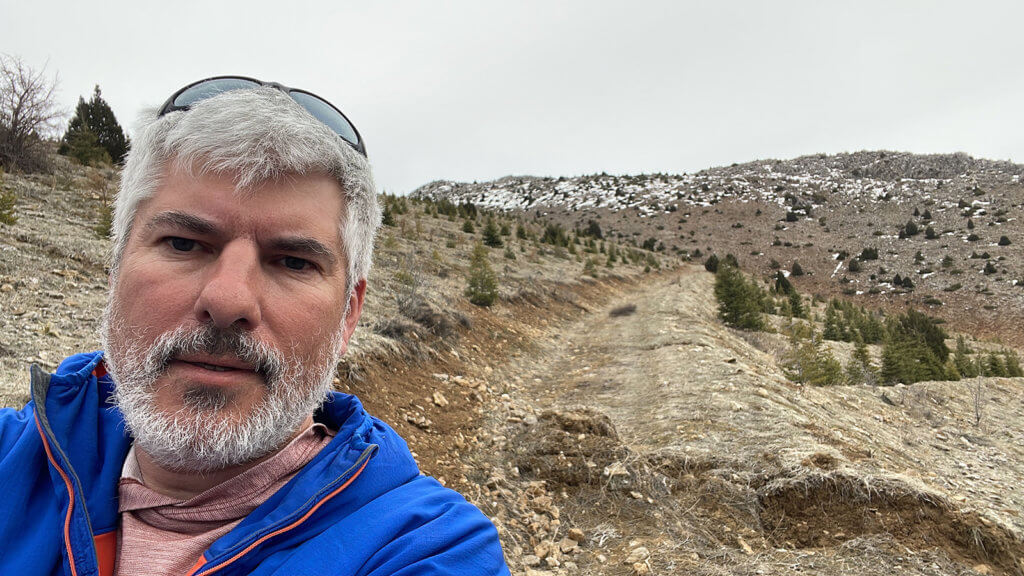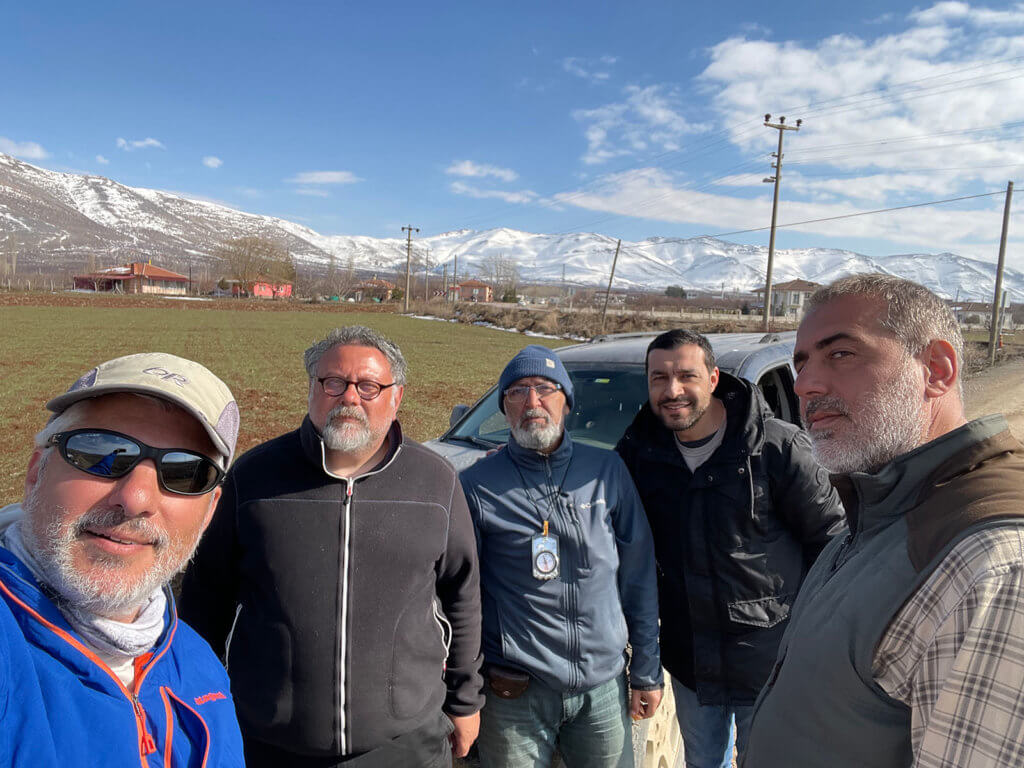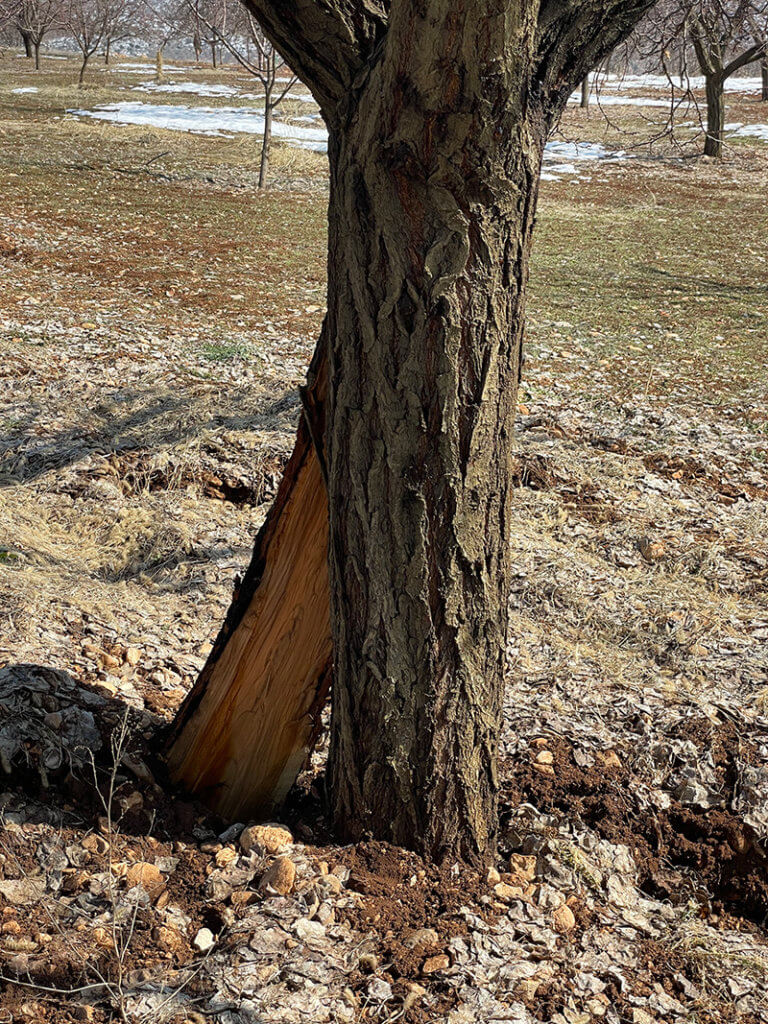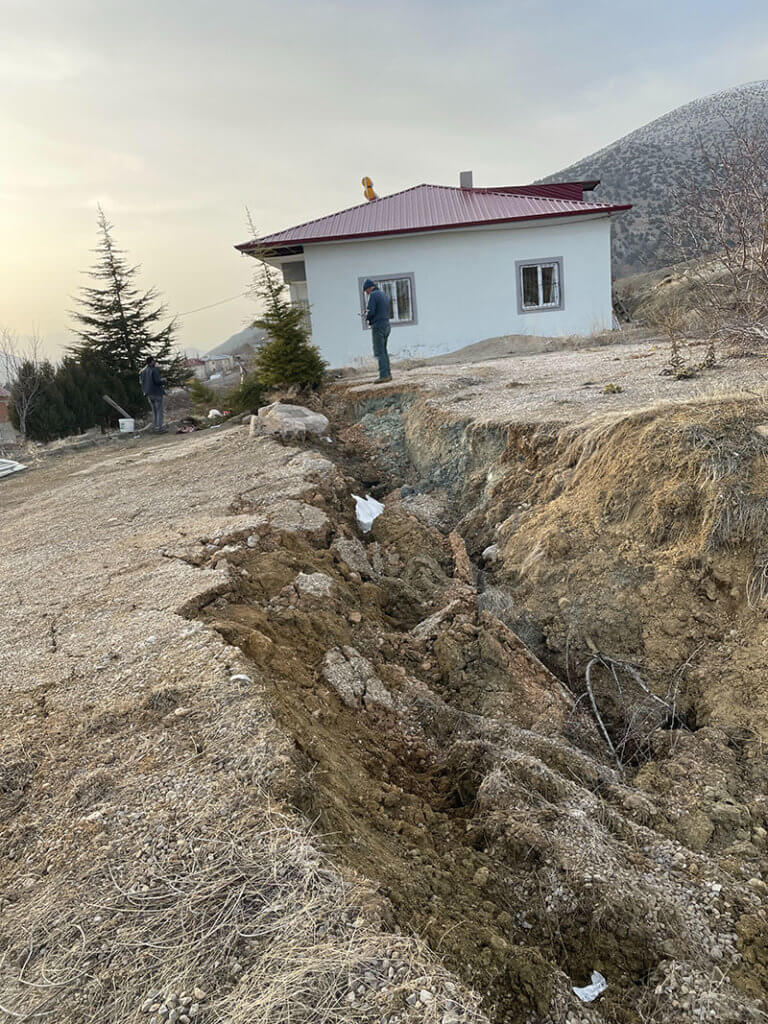Ten days after the first 7.8-magnitude earthquake struck at 4:17 on a freezing snowy winter morning near Pazarcık City, Turkey, followed by a second magnitude 7.5 event near the town of Ekinözü, Sinan Akçiz arrived in his home country.
The Istanbul native wanted to help with post-disaster response in quake-hit provinces, where entire neighborhoods were leveled.
Akçiz knew the powerful seismic events on Feb. 6 that ripped through provinces in southern Turkey and neighboring northern Syria changed people’s lives forever.

“It was much worse — as we all feared,” Akçiz said.
The Cal State Fullerton earthquake geologist experienced feelings of helplessness, frustration and heartbreak after the Kahramanmaraş earthquakes struck.
It was clear what Akçiz had to do to help.
During his three-week research trip from late February to early March in south-central Turkey, he examined the aftermath along the East Anatolian Fault, as well as other fault systems in the region.
His goal was to better understand how the fault broke and moved during the two huge earthquakes and the more than 20,000 aftershocks. The two main earthquakes created a surface rupture approximately 300 miles long.
Both earthquakes are associated with the East Anatolian Fault system, similar to California’s 800-mile long San Andreas Fault. Both fault systems are strike-slip faults, where blocks of the earth move mostly horizontally, Akçiz said.
“Large magnitude earthquakes typically leave an expression on the surface,” said Akçiz, assistant professor of geological sciences. “These can get quickly erased due to erosion or during repair efforts. It is important to document earthquake related-surface deformation as quickly as possible.”

Collaborating With Turkish Earthquake Experts
Akçiz joined colleagues from Istanbul Technical University — where he earned his bachelor’s degree — Munzur University, Fırat University and Kahramanmaraş Sütçü İmam University in the field. The researchers mainly investigated the surface rupture associated with the 7.5-magnitude Ekinözü earthquake.
“It was important for me to go back to my home country and provide my knowledge and expertise to my colleagues, and to collect the necessary earthquake activity in the field before the data disappeared,” he said.
The Southern California Earthquake Center provided funding to support his research trip. He also communicated with colleagues from the U.S. Geological Survey who shared critical data to guide him in the field.
The researchers’ work included identifying the end points of the rupture, mapping the faults that ruptured and making displacement measurements along the faults.
Since it is important for this data to be disseminated as rapidly as possible, Akçiz and his colleagues are currently compiling their field data and presenting findings at scientific meetings. These findings will lead to publications and reports as well as future research projects along the ruptured fault sections.

Their data collection was mostly in rural areas, where people had not yet received any help and were left homeless and displaced.
“People lost nearly everything overnight. They were living under tarp tents. Despite their confusion, frustration, and perhaps anger, they opened their tents for us and offered us tea and cookies,” he said.
“They want to understand what has happened. These are resilient people who already live in very difficult conditions. But the earthquakes were something they were not prepared for. They welcomed us so that their children and grandchildren would not have to experience this kind of earthquake devastation again. It was a genuine validation of why we were there.”
Turkey is no stranger to earthquakes. In 1999, a similar large magnitude earthquake occurred near Akçiz’s hometown of İstanbul. Witnessing his family and friends experience the devastation, he decided to become a paleoseismologist and study the times and magnitudes of past earthquakes along fault systems.
Lessons From Turkey

Akçiz, who earned a doctorate in geology from Massachusetts Institute of Technology, has been working along the San Andreas Fault since 2005 to characterize its past earthquake history. He has mapped the surface rupture associated with the 2010 El Mayor-Cucapah in Baja California and the 2019 Ridgecrest earthquakes.
Because Turkey’s East Anatolian Fault is like the San Andreas Fault, Akçiz relayed it is important for scientists to learn from, and respond to, such large magnitude quake activity to save lives and protect property. As of March, more than 50,000 people in Turkey lost their lives and over 7,000 died in Syria.
“We need to be better informed about what we can expect if a similar earthquake were to happen in California,” Akçiz said. “The possibility of having a large-magnitude aftershock on a different fault within a few hours of the first earthquake is definitely a jaw-dropping reality we need to evaluate — and be prepared for in California.”
Akçiz, who recently shared his research and field experiences in Turkey with his students, emphasized the importance of being quake-ready.
“We need to do a better job in communicating what can happen during an earthquake and what we should expect afterward. Life will not go on as usual. It is true that scientists can’t tell you when that earthquake will happen or exactly where it will happen, but we know enough collectively to get prepared as a community.”